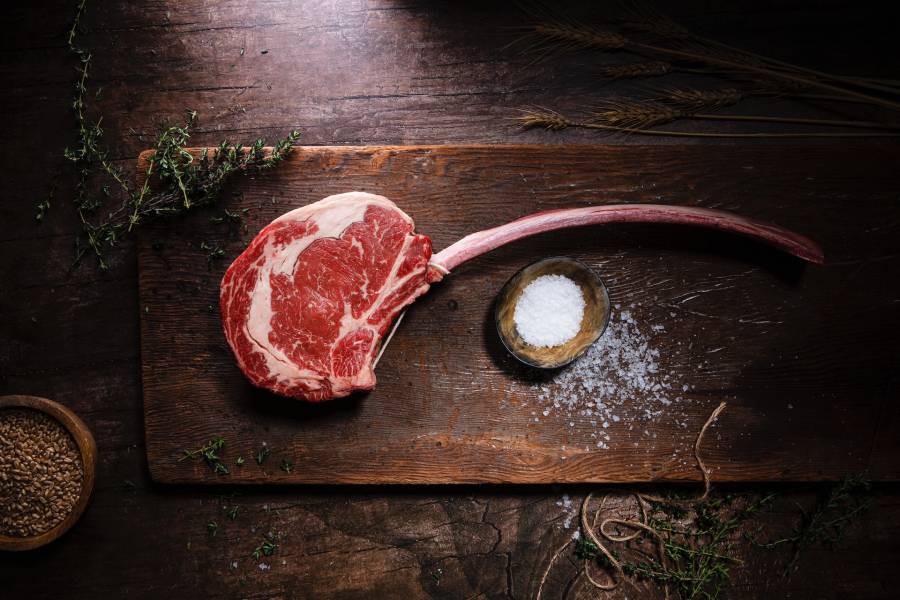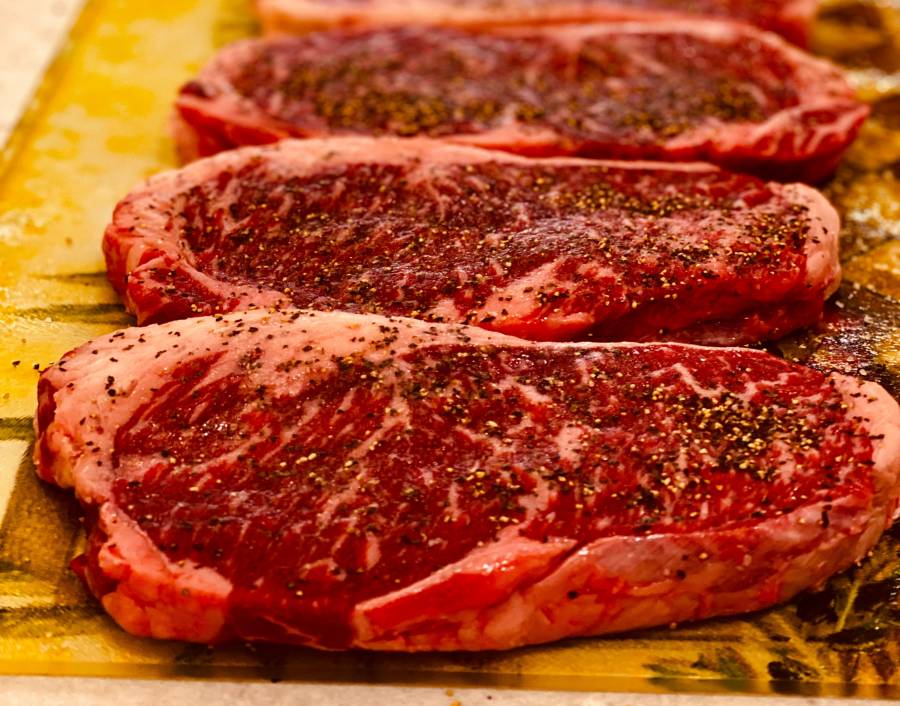Dry bringing your steak can be a great way to add flavor and juiciness. But if it’s too salty, it can ruin the dish.

Most people don’t like their salty steaks but end up over-salting them while dry brining because they’re not sure how much salt to use.
Suppose you’re finding out why your dry-brined steaks are too salty; there are ways to fix the problem. The first thing to remember is that dry brining is a very concentrated form of seasoning.
So a little goes a long way.
Now, we’ll go over how to dry brine your steak and what to do with your already too-salty steak.
Why is My Dry Brine Steak Too Salty?
The answer to this question can be broken down into three parts. The first part concerns the amount of salt you’re using.
And the second part concerns the type of salt you’re using.
Amount Of Salt
While salt is an essential ingredient in any steak recipe, it’s important to use the right amount. Too much salt will make the dry brine steak too salty.
And too little will result in a bland and unappetizing steak. It means you don’t need to use as much salt as you would if you were wet bringing.
A general rule of thumb is to use one teaspoon of kosher salt per pound of steak. If you’re using a different type of salt, like table salt, you’ll want to use even less.
The best way to determine the perfect amount of salt is to experiment. And find the level that suits your taste.
Type Of Salt
The type of salt you use can also make a difference. Some types of salt are denser than others and will therefore contain more salt per volume.
It means you’ll want to use less of a dense salt than a less dense salt.
Quality Of Meat
Another critical factor in making a delicious steak is the quality of the meat. Be sure to buy steak from a reputable butcher or grocery store.
And look for cuts that are well-marbled with fat. These cuts will produce a tender and juicy steak packed with flavor.
With a bit of practice, you can soon grill up perfect steaks every time.
Time Taken
When dry-brining a steak, keeping an eye on the clock is essential. If you leave the meat in the salt for too long, it will start to taste very salty.
The key is to find the sweet spot, where the steak is seasoned perfectly without being too salty. How long you’ll need to dry-brine depends on the steak’s size and thickness.
And it’s essential to check it regularly.
The general rule is to dry brine for 1-2 hours per pound of steak.
Start with a shorter brining time and taste the meat before deciding whether to leave it in for longer. With a little trial and error, you’ll be able to find the perfect brining time for your steak.
With a bit of practice, you’ll be able to avoid making dry brine steak too salty. By paying attention, you can create delicious steaks perfectly seasoned every time.
What Can I Do If My Steak Is Too Salty?
Most home cooks have had the experience of seasoning their steak with salt. It can be a common problem, as it’s easy to oversalt meat while cooking it.
If your steak is already too salty, there are a few things you can do to try and salvage it.

Rinse The Steak
One of the quickest ways to remove some salt from your steak is to rinse it off with cold water. It won’t remove all of the salt, but it will remove some excess.
You can also try blotting the steak with a paper towel, which will help to absorb some of the salt. If your steak is still too salty, you can try cooking it in broth or wine.
It will help to dilute the saltiness.
Soak The Steak
One way to remove salt from your steak is to soak it in cold water. This process can take 30 minutes to an hour.
While this will help draw out some salt, it’s essential to soak the steak properly. Otherwise, you run the risk of making your steak tough and chewy.
First, make sure to use cold water. Hot water will cause the steak to cook, making it harder to remove the salt.
Second, don’t oversoak the steak. Too much time in the water can make the meat flavorless and mushy.
Third, be sure to pat the steak dry before cooking. Allowing excess water to evaporate will help concentrate the meat’s flavors.
Soaking your steak is a simple way to reduce the amount of salt without sacrificing flavor.
Braise The Steak
Braising is a cooking method that involves cooking the steak in a small amount of liquid, like water or broth. It will help to dilute the saltiness of the steak.
Braising also helps to tenderize the steak, making it more flavorful and easier to chew. To braise a steak, sear it in a hot pan to brown the outside.
Then, add enough liquid to cover the bottom of the pan and bring it to a simmer. Cover the pan and cook the steak until it is cooked through.
Once the steak is cooked, please remove it from the pan. Then let it rest for a few minutes before slicing and serving.
Re-Cook The Steak
Another option is to re-cook the steak. Try cooking the steak with sweet or acidic ingredients like honey, pineapple, or balsamic vinegar.
These can help to offset the saltiness of the steak. It will take more time.
But it will allow you to start from scratch and get the seasoning right.
Discard The Steak
You can always discard the steak and start over if all else fails. It’s not ideal, but it’s better than eating a steak that’s too salty.
You can use the above methods to salvage a too-salty steak. If all else fails, you can always start over.
With a bit of practice, you’ll be able to avoid making this mistake in the future.
Key Takeaways
- It’s easy to oversalt meat when you’re cooking it.
- Rinsing your steak with cold water is the most rapid and straightforward method to remove some of the salt.
- Soaking the steak in cold water for 30 minutes to an hour can help reduce some of the salt.
- Braising is a cooking technique in which the steak is cooked in a small quantity of liquid. It includes water or broth. It will aid in the reduction of the saltiness of the steak.
- If you want to eat your steak but don’t want it to be too salty, try cooking it with sweets. You can also use acidic ingredients.
